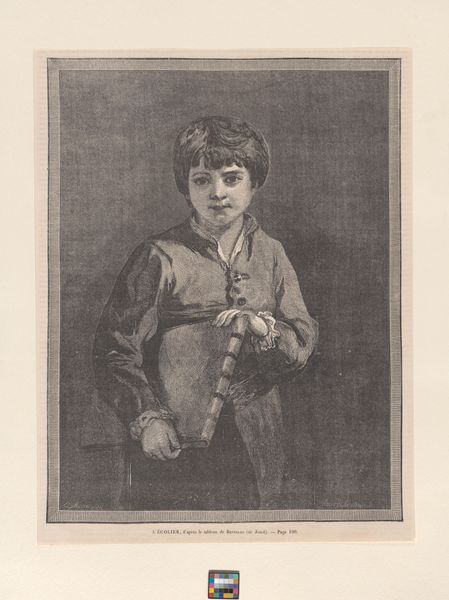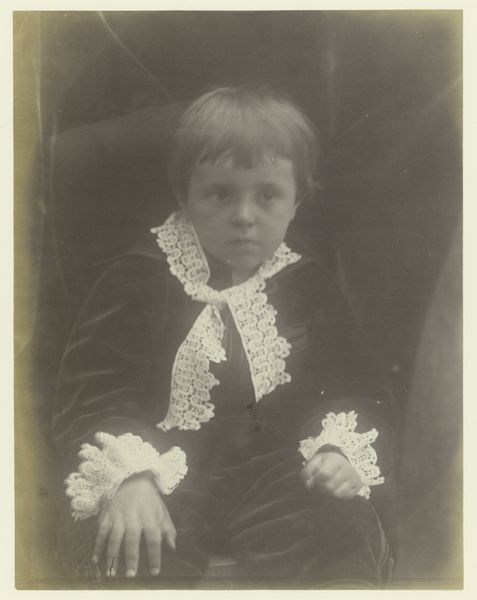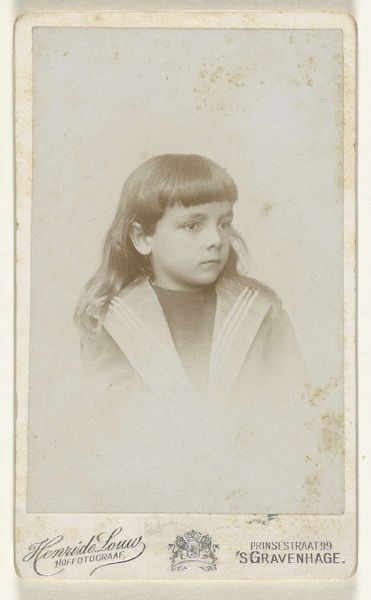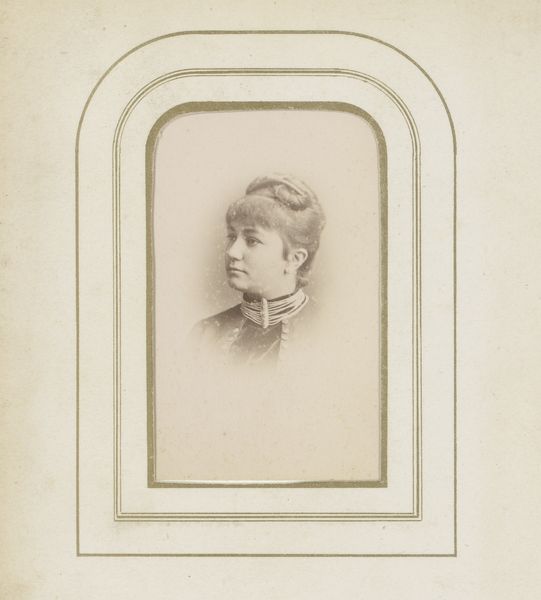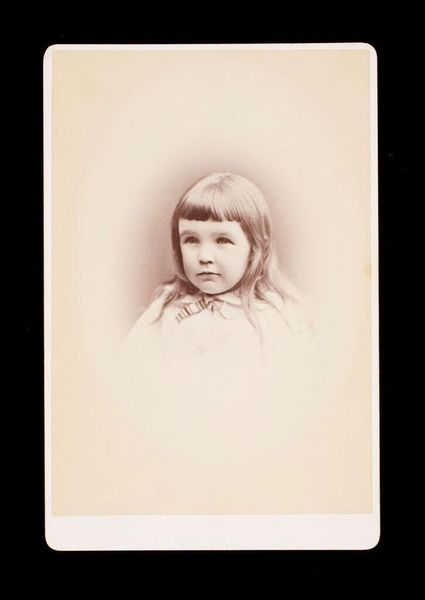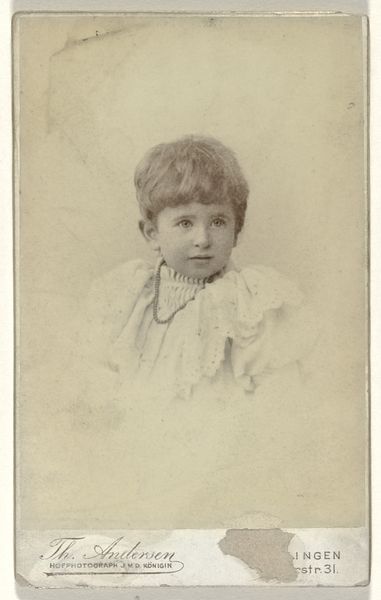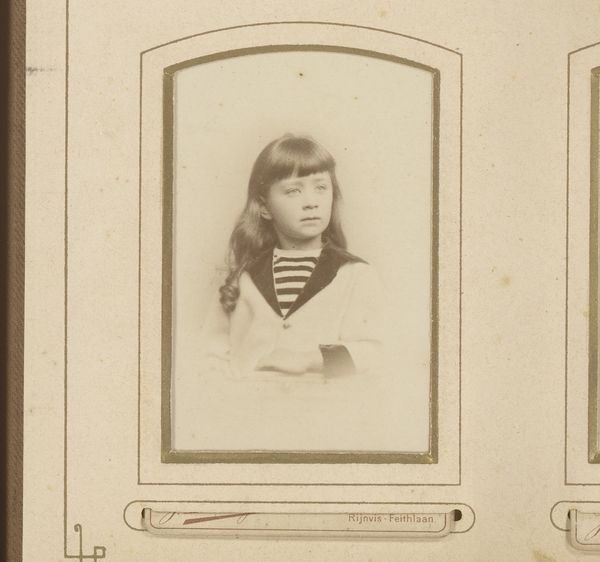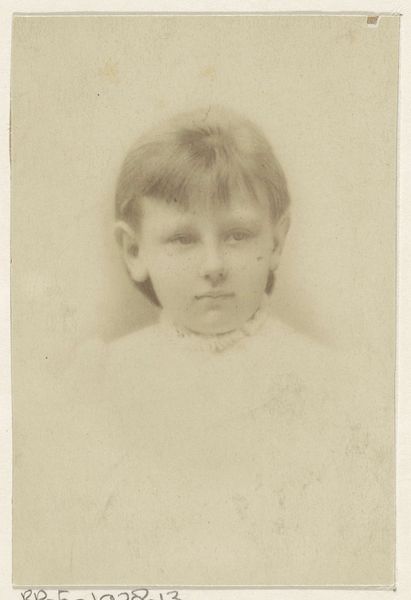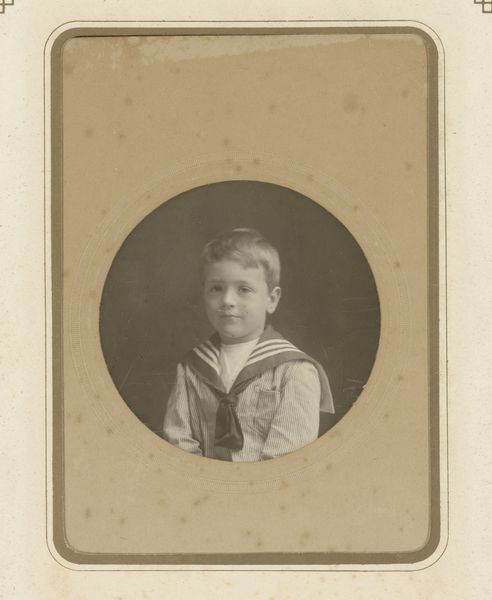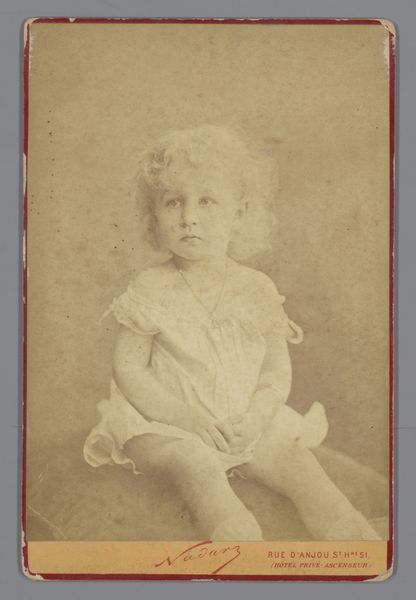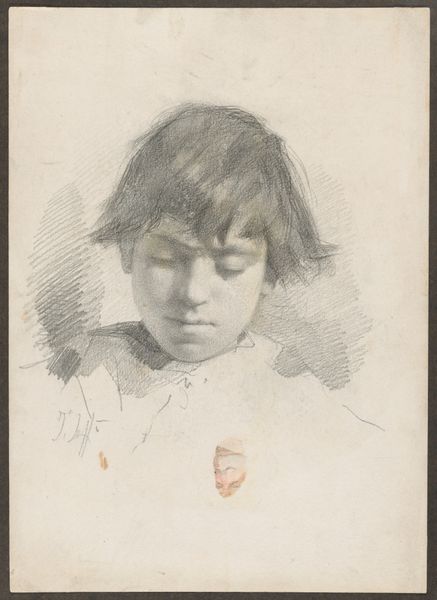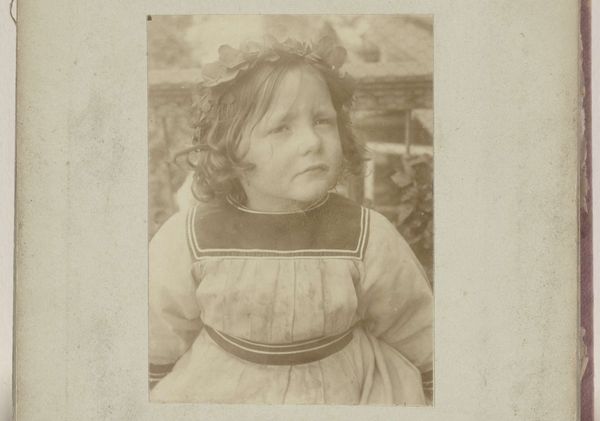
photography, gelatin-silver-print
#
portrait
#
self-portrait
#
pictorialism
#
photography
#
gelatin-silver-print
Dimensions: 15.6 × 12.5 cm (image/paper); 19.9 × 15 cm (hinged paper); 36.8 × 26.5 cm (affi×ed glassine)
Copyright: Public Domain
Curator: This is Gertrude Käsebier's "Portrait of a Boy," taken around 1897. She employed the gelatin-silver print technique, a hallmark of pictorialism. What do you make of it? Editor: The composition feels very soft and intimate. There's a tonal quality, especially the gentle fading into darkness, which evokes a poignant stillness. Curator: Indeed. Käsebier was known for her careful manipulation of the photographic process to achieve painterly effects, elevating photography to fine art status. The labor-intensive process—coating, exposing, and developing each print—gave these images a unique value in a burgeoning mass culture. Editor: It's a fascinating move. Visually, the soft focus and limited tonal range suggest a kind of timelessness. Look at the boy’s face; his gaze is averted, creating a sense of mystery. This aesthetic manipulation seems central to her practice. Curator: Absolutely, but it also connects to the context of childhood at the time. Käsebier photographed children extensively, often imbuing them with a romantic innocence, partially responding to societal views on childhood and partly rebelling against the prevailing studio portraiture styles. She, as a working woman, also renegotiated the status of the image, infusing commercial studio practices with aesthetic strategies that subvert it. Editor: That tension between art and commerce makes the image much more interesting. There's something quite modern in how she handles the light, almost blurring the lines between presence and absence. And look at the delicate surface textures achieved through the printing process! Curator: Her process wasn't merely technical but profoundly social. Pictorialism as a movement tried to legitimize photography by mimicking painting and drawing. Käsebier also sought artistic recognition and professional advancement in a male-dominated art world. Her choices challenge assumptions and pushed photography further in terms of artistic possibilities, which often goes unnoticed due to how "quaint" it looks to us now. Editor: This revisiting definitely enhanced my perception, and those nuances now echo far beyond mere aesthetics. Thank you. Curator: And to me as well!
Comments
No comments
Be the first to comment and join the conversation on the ultimate creative platform.
